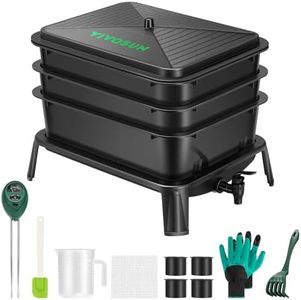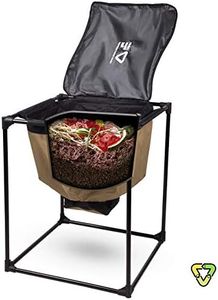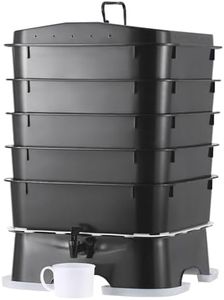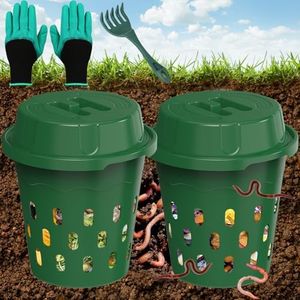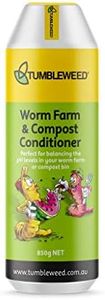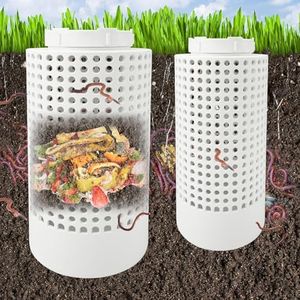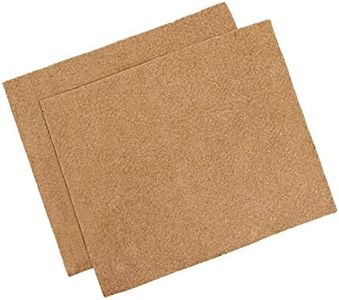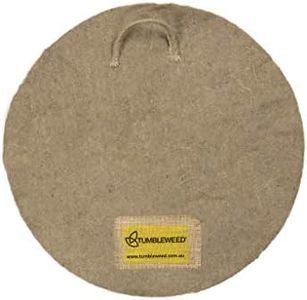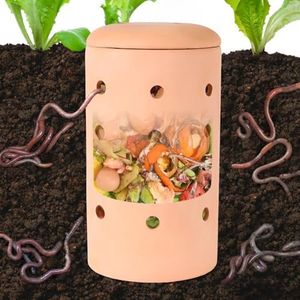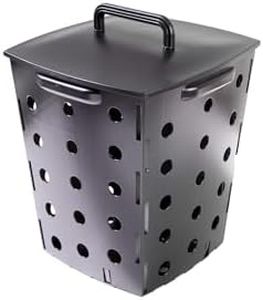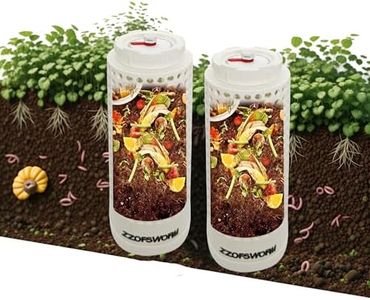We Use CookiesWe use cookies to enhance the security, performance,
functionality and for analytical and promotional activities. By continuing to browse this site you
are agreeing to our privacy policy
10 Best Worm Bins
From leading brands and best sellers available on the web.Buying Guide for the Best Worm Bins
Choosing the right worm bin is about understanding your space, your goals, and how much food waste you want to compost. Worm bins, also called vermicomposting systems, turn kitchen scraps into nutrient-rich compost with the help of worms. By keeping several key features in mind, you can find a worm bin that matches your lifestyle and makes composting easier and more effective.Size/CapacityThis refers to how much organic material (food scraps) the worm bin can hold at one time. It’s important because a bin that’s too small might not keep up with your waste, while one that’s too large could be hard to manage or take up unnecessary space. Small bins (up to 5 gallons) suit single people or those new to composting. Medium (5-10 gallons) are good for small households, while large bins (over 10 gallons) are for bigger families or more serious composters. Choose based on how much food waste you generate and the space you have available.
MaterialWorm bins are commonly made from plastic, wood, or sometimes metal. The material can impact the bin’s durability, breathability, and maintenance. Plastic bins resist rot, are lightweight, and hold moisture well. Wooden bins look natural and breathe better, reducing odor risks, but can degrade over time. Metal bins are uncommon due to rust and temperature issues. Decide on the material based on where you’ll keep the bin (indoors or out), and how much you value looks versus low maintenance.
VentilationVentilation refers to the airflow within the bin. Good airflow keeps worms healthy, prevents odor, and stops excess moisture from building up. Bins with lots of small air holes or a mesh lid provide better ventilation; however, too many holes might let in pests or dry the bin out. If you’re keeping the bin indoors, make sure it’s well-ventilated but secure. If you’re placing it outside, choose a design that balances airflow with pest protection.
DrainageDrainage helps remove excess moisture from the bin, preventing worm drowning and bad smells. Some bins have a spigot or tray at the bottom to collect liquid (sometimes called 'worm tea') while others rely on holes in the base to let water escape. For indoor bins, good drainage is crucial to avoid leaks and mess; look for a collection tray or spout. For outdoor bins, simple holes might work, but ensure you have somewhere safe for the water to drain.
Ease of HarvestingThis is about how easily you can collect the finished worm compost. Some bins are single-layered, so you need to sort worms from compost manually. Others have stackable trays; as you add waste to higher trays, worms move upwards, leaving compost behind—making harvesting simpler. Multi-tray or tiered bins are more convenient and save time. If you want less hassle and easier compost removal, look for a bin with a design that supports easy harvesting.
Odor Control FeaturesEffective odor control is essential, especially for indoor worm bins. Features that help include tight-fitting lids, charcoal filters, and well-balanced ventilation. If you live in a small space or plan to keep the worm bin indoors, prioritize models with good odor control to ensure the process doesn’t create unwanted smells in your home.

